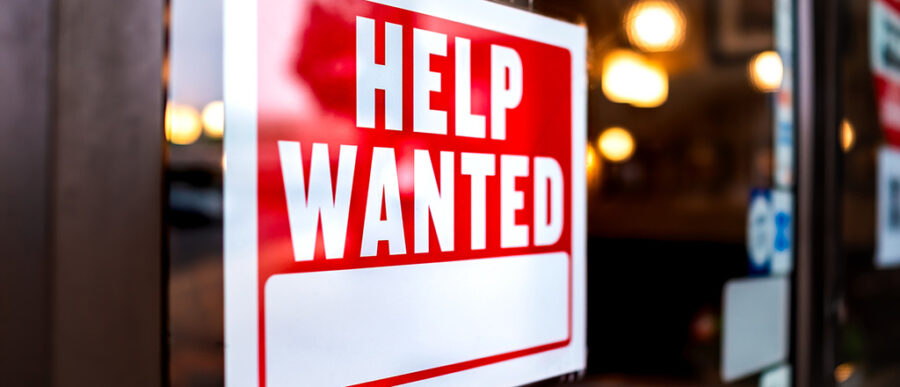The U.S. labor market is looking up, says Wharton management professor Matthew Bidwell.
The monthly unemployment rate ticked down to 3.8% in February, the lowest in two years, according to government data. Job growth was widespread across leisure and hospitality, professional and business services, health care, and construction.
Bidwell and other experts agree that while employment numbers aren’t back to pre-pandemic levels, they bode well for the economy. He spoke about the forecast during a segment with Wharton Business Daily on SiriusXM. (Listen to the podcast above.)
“Things look pretty good,” Bidwell said. “I’m a dyed-in-the-wool pessimist, so if you’d asked me when the pandemic started, I was ready for a long, drawn-out recovery of the kind we saw for both the 2001 and 2008 recessions. Instead, we’ve had this incredibly rapid bounce back.”
Bidwell pointed out that before the COVID-19 pandemic, the U.S. was in the midst of a historically strong labor market. Then the pandemic struck, resulting in devastating job losses as companies shuttered, people got sick, parents stayed home to care for children out of school, and restrictions were put into place to contain the spread of the virus. After reaching a peak in February 2020, employment fell in the following two months by 15%, according to government data. It was the most precipitous drop in decades. In comparison, jobs declined by 6% during the Great Recession.
“The more investment we make in the human capital of the workforce, the better our economy is going to run.” –Matthew Bidwell
“We’ve basically clawed our way back to where we’d been kind of in the late 1990s, so we are in what is historically a very good labor market, at least by the stance of the last 30 to 40 years,” Bidwell said.
Quit rates have also stabilized, indicating that the Great Resignation may be cooling. But Bidwell noted that job openings are still 40% to 50% above pre-pandemic levels, a rate that is “remarkably high.”
“They’re no longer going up, which is going to be a relief to employers, but they’re not yet really coming down,” he said.
Also unclear is how inflation will affect the economy. Last month, inflation reached a stunning 7.5%, a high not seen since the early 1980s. Companies typically invest less money during times of high inflation, resulting in less job growth.
But experts are debating what’s pushing the current tidal wave of inflation.
“There’s a sense that this is not a standard kind of overheating problem in that there are very specific supply chain problems causing it,” Bidwell said. “That raises optimism that we can get inflation down without doing damage to the labor market.”
Workers Are Winning
The current labor market is favorable for people with a broad range of skills, not just those with advanced degrees or technical backgrounds. Workers with a high school education are experiencing record wage increases, and unskilled workers are in high demand. In fact, Bidwell said, unskilled work is one of the hottest niches in the labor market.
“We don’t have a great track record of bringing inflation down without pushing up unemployment, and I really hope the Fed can pull it off.” –Matthew Bidwell
“I think the workforce could always be better educated. The more investment we make in the human capital of the workforce, the better our economy is going to run,” he said. “But the workers in demand here are not particularly ones with highly advanced, formal skills.”
Bidwell discounts the effect of remote work on the labor market, saying that 70% of jobs still require employees to be on site. He doesn’t think the option of remote or hybrid work will significantly change the employment rate by drawing new people into the labor force.
Nevertheless, he’s encouraged by the bargaining power that all kinds of workers are having right now, thanks to the tight labor market. It’s their time to negotiate for what they want, whether that’s more flexibility, better perks, or increased pay.
“I think we are in somewhat uncharted territory. It’s been a long time since we’ve seen labor in such demand,” he said. “From my perspective, that’s all good. The workforce has often not been on the better end of bargaining over the last 20, 30 years.”
Yet inflation remains “the wild card.”
“We don’t have a great track record of bringing inflation down without pushing up unemployment, and I really hope the Fed can pull it off. It’s a trick maneuver,” Bidwell said. “There’s a famous line that the job of the Fed is to take away the punch bowl just as the party’s getting started. That’s kind of what you’re looking at.”



